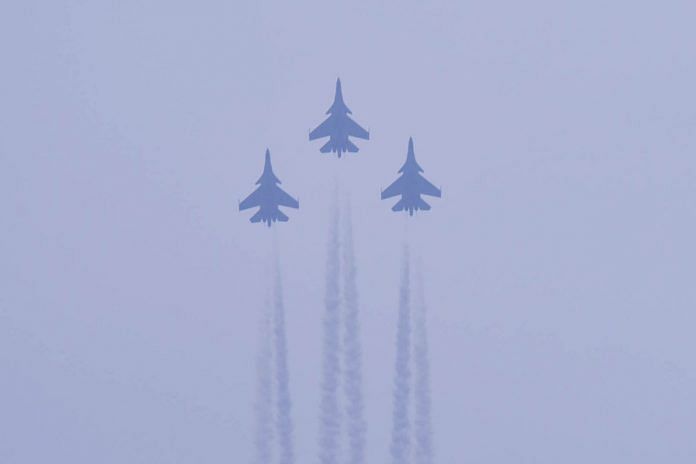The widespread international image of India as a ‘soft state’ must be dispelled with the creation of a national security doctrine.
Unless a nation spells out its Core National interests (CNI), the contents of a national security doctrine will at best be pedestrian. (Read: The first part of the series on why India needs a National Security Doctrine)
Core national interests are generally arrived at by weaving together a combination of history, aspiration and capability that would generally point at what is dear to a nation and what it wants to be in a finite period – regional power, benign power or emerging global power. A set of strategic and operational templates and objectives emerges from the CNI and can form the heart of a National Security Doctrine.
From an Indian perspective, the first step would be to display an intent to build and exercise Comprehensive National Power (CNP) in pursuit of CNI. The next step is to synergise all tools and pillars of statecraft in pursuit of CNI and CNP. Nations can have egos too, and the widespread international image of India as a ‘soft state’ must be dispelled.
The major tools or pillars of statecraft that directly impinge on national security need careful orchestration. These are political and governance structures, which enable force projection, protection of sovereignty and internal security, support diplomacy and shape the international environment.
Then there are economic support structures and those that deal with science, technology and innovation for national security. Futurists may argue that in the emerging geopolitical environment, there are dimensions of ‘soft’ and ‘smart’ power that impinge and influence national security.
On the face of it, putting together a comprehensive National Security Doctrine should be a piece of cake for a large and powerful nation like India. The first step I guess is to develop comprehensive White Papers on all the pillars, seek feedback from the stakeholders, and finally, table it in parliament and put it out in the public domain for scrutiny while the core team works at reconciling differences, building convergence and amalgamating key precepts into a well-fused, coherent, cogent and slickly produced National Security Doctrine document.
Having articulated the doctrine, it is only when the doctrine is exercised (should the need arise) will the country be able to demonstrate its intent, resilience and credibility.
Defining national interests in a multi-party democracy like India that has representation across the ideological spectrum has been hard to achieve. When one adds political opportunism, deep religious, ethnic and economic divides, one arrives at a heady cocktail of obstacles to consensus on practically every issue under the sun.
Despite these challenges, there remains a need to highlight that Core National Interests are those that are non-negotiable irrespective of political affiliations and though many will say these are enshrined in our constitution, there is a need to sift them in a contemporary strategic landscape and arrive at something meaningful.
Secondary National Interests are those that will add value should there be an adequate consensus, while Peripheral National Interests are those that can act as force multipliers. Ideas are useless unless they are first converted into processes, and finally into a product.
Methodologies for coming up with a robust security doctrine must follow stringent timelines, and involve the best talent to put together the White Papers. It would not be unreasonable to expect the White Papers to be tabled in Parliament in a period of two years and the NSD could emerge a year later. Clear top-down directives, constitution of working groups with necessary security clearances and access to data, quarterly reviews by the NSA, and half-yearly reviews by the PM are how the process can get kick-started.
A typical White Paper working group will comprise a world-renowned expert heading the group with Tier 1 and Tier 2 consultants. Tier 2 consultants will work in isolation with their research groups, while Tier 1 consultants will fuse everything together in consultation with the leader of the group.
A dilemma that will emerge on completion of the White Papers is on the level of involvement of the leaders of the White Paper groups in the preparation of the final doctrine. Ownership and turf issues have always been predominant in the Indian strategic milieu and it would be essential to have a Group of Ministers to orchestrate the NSD in conjunction with the National Security Council that could be restructured keeping in mind the need for a NSD by the year 2022.
Many would argue that this timeline is too stretched and would need compression, but a look at the political milieu and the fact that this would be the first time that the Indian state would be formally embarking on such an exercise clearly suggests that caution and skepticism would prevail.
In the last part of the series, the author will highlight strategic, security and geopolitical opportunities, challenges and stereotypes associated with this endeavor.
You can read the first part in this series here
Arjun Subramaniam is a former fighter pilot and recently retired as an Air Vice Marshal from the IAF. Author of ‘India’s Wars: A Military History 1947-197,.’ he is currently a Visiting Fellow at The Harvard Asia Center and Non-Resident Senior Fellow at the Mitchell Institute for Aerospace Power Studies.
Eagle Eye will be a regular column from him as a contributing editor exclusively for The Print.






